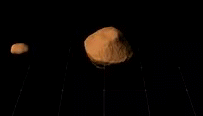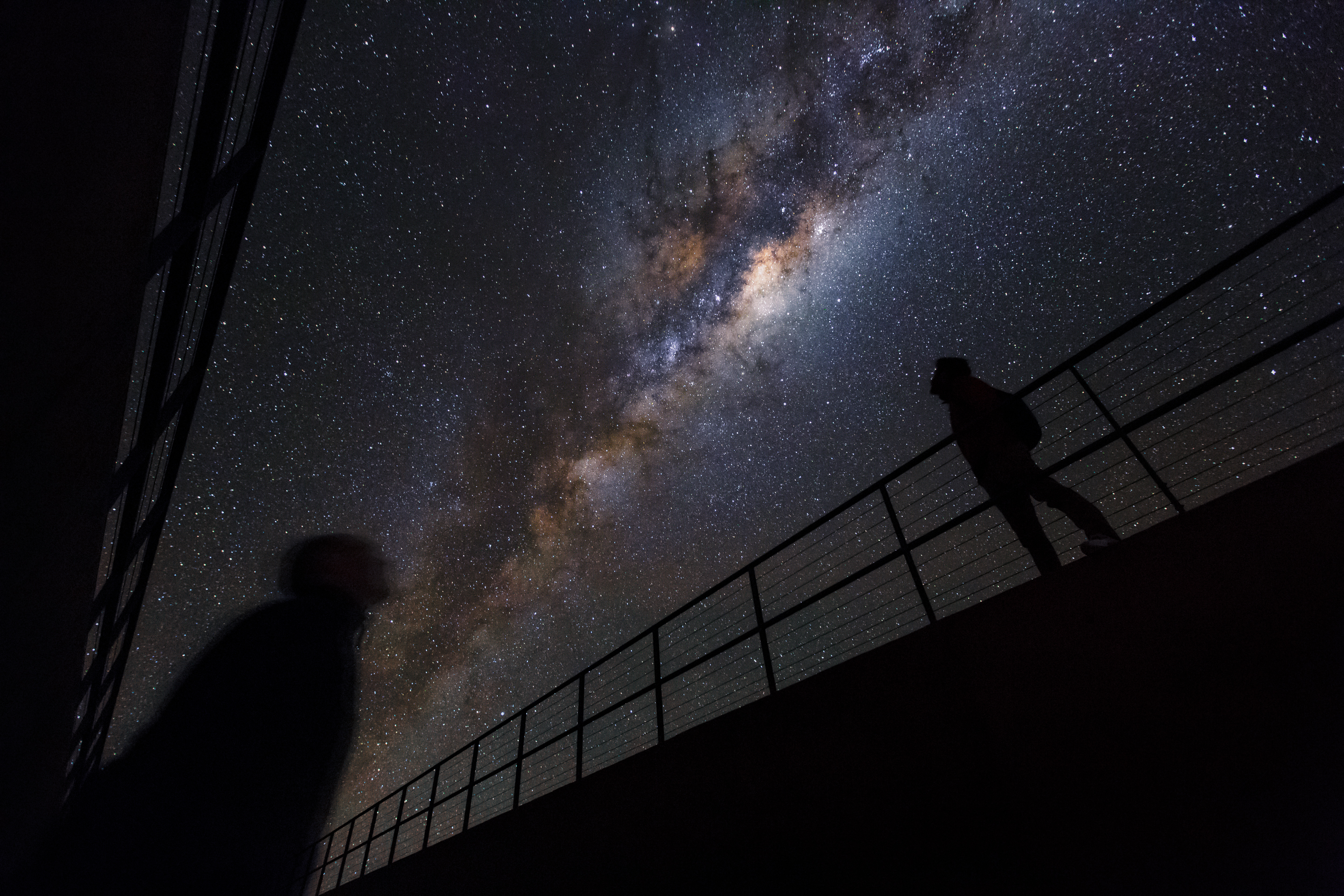|
The Telescope (magazine)
''The Telescope'' was a magazine for amateur astronomers published between 1931 and 1941. The magazine was first published as a quarterly under the editorship of Harlan Stetson, director of the Perkins Observatory in Ohio. It featured popular articles about contemporary research. In 1934 Stetson moved to Cambridge, Massachusetts and brought the magazine with him. Publishing duties were assumed jointly by the Harvard College Observatory and the Bond Astronomical Club, under the editorship of Donald H. Menzel. ''The Telescope'' became a bimonthly publication at this time. In 1941, ''The Telescope'' was merged with '' The Sky'', creating ''Sky & Telescope'' magazine, which has remained in publication ever since. See also *Amateur astronomy Amateur astronomy is a hobby where participants enjoy observing or imaging celestial objects in the sky using the Naked eye, unaided eye, binoculars, or telescopes. Even though scientific research may not be their primary goal, some amateur ... [...More Info...] [...Related Items...] OR: [Wikipedia] [Google] [Baidu] |
Amateur Astronomy
Amateur astronomy is a hobby where participants enjoy observing or imaging celestial objects in the sky using the Naked eye, unaided eye, binoculars, or telescopes. Even though scientific research may not be their primary goal, some amateur astronomers make contributions in doing citizen science, such as by monitoring variable stars, double stars, sunspots, or occultations of stars by the Moon or asteroids, or by discovering transient astronomical events, such as comets, galactic novae or supernovae in other galaxy, galaxies. Amateur astronomers do not use the field of astronomy as their primary source of income or support, and usually have no professional degree in astrophysics or advanced academic training in the subject. Most amateurs are hobbyists, while others have a high degree of experience in astronomy and may often assist and work alongside professional astronomers. Many astronomers have studied the sky throughout history in an amateur framework; however, since the be ... [...More Info...] [...Related Items...] OR: [Wikipedia] [Google] [Baidu] |
1941 Disestablishments In Massachusetts
The Correlates of War project estimates this to be the deadliest year in human history in terms of conflict deaths, placing the death toll at 3.49 million. However, the Uppsala Conflict Data Program estimates that the subsequent year, 1942, was the deadliest such year. Death toll estimates for both 1941 and 1942 range from 2.28 to 7.71 million each. Events Below, the events of World War II have the "WWII" prefix. January * January–August – 10,072 men, women and children with mental and physical disabilities are asphyxiated with carbon monoxide in a gas chamber, at Hadamar Euthanasia Centre in Germany, in the first phase of mass killings under the Aktion T4 program here. * January 1 – Thailand's Prime Minister Plaek Phibunsongkhram decrees January 1 as the official start of the Thai solar calendar new year (thus the previous year that began April 1 had only 9 months). * January 3 – A decree (''Normalschrifterlass'') promulgated in Germany by Martin Bormann ... [...More Info...] [...Related Items...] OR: [Wikipedia] [Google] [Baidu] |
Magazines Disestablished In 1941
A magazine is a periodical publication, print or digital, produced on a regular schedule, that contains any of a variety of subject-oriented textual and visual content forms. Magazines are generally financed by advertising, purchase price, prepaid subscriptions, or by a combination of the three. They are categorised by their frequency of publication (i.e., as weeklies, monthlies, quarterlies, etc.), their target audiences (e.g., women's and trade magazines), their subjects of focus (e.g., popular science and religious), and their tones or approach (e.g., works of satire or humor). Appearance on the cover of print magazines has historically been understood to convey a place of honor or distinction to an individual or event. Term origin and definition Origin The etymology of the word "magazine" suggests derivation from the Arabic (), the broken plural of () meaning "depot, storehouse" (originally military storehouse); that comes to English via Middle French and Italian . ... [...More Info...] [...Related Items...] OR: [Wikipedia] [Google] [Baidu] |
Magazines Established In 1931
A magazine is a periodical literature, periodical publication, print or digital, produced on a regular schedule, that contains any of a variety of subject-oriented textual and visual content (media), content forms. Magazines are generally financed by advertising, newsagent's shop, purchase price, prepaid subscription business model, subscriptions, or by a combination of the three. They are categorised by their frequency of publication (i.e., as weeklies, monthlies, quarterlies, etc.), their target audiences (e.g., women's and trade magazines), their subjects of focus (e.g., popular science and religious), and their tones or approach (e.g., works of satire or humor). Appearance on the cover of print magazines has historically been understood to convey a place of honor or distinction to an individual or event. Term origin and definition Origin The etymology of the word "magazine" suggests derivation from the Arabic language, Arabic (), the broken plural of () meaning "depot, s ... [...More Info...] [...Related Items...] OR: [Wikipedia] [Google] [Baidu] |
Defunct Magazines Published In The United States
Defunct may refer to: * ''Defunct'' (video game), 2014 * Zombie process or defunct process, in Unix-like operating systems See also * * :Former entities * End-of-life product In Industry (economics), industry, product lifecycle management (PLM) is the process of managing the entire lifecycle of a product from its inception through the Product engineering, engineering, Product design, design, and Manufacturing, ma ... * Obsolescence {{Disambiguation ... [...More Info...] [...Related Items...] OR: [Wikipedia] [Google] [Baidu] |
Astronomy Magazines
Astronomy is a natural science that studies astronomical object, celestial objects and the phenomena that occur in the cosmos. It uses mathematics, physics, and chemistry in order to explain their origin and their overall chronology of the Universe, evolution. Objects of interest include planets, natural satellite, moons, stars, nebulae, galaxy, galaxies, meteoroids, asteroids, and comets. Relevant phenomena include supernova explosions, gamma ray bursts, quasars, blazars, pulsars, and cosmic microwave background radiation. More generally, astronomy studies everything that originates beyond atmosphere of Earth, Earth's atmosphere. Cosmology is a branch of astronomy that studies the universe as a whole. Astronomy is one of the oldest natural sciences. The early civilizations in recorded history made methodical observations of the night sky. These include the Egyptian astronomy, Egyptians, Babylonian astronomy, Babylonians, Greek astronomy, Greeks, Indian astronomy, Indians, Ch ... [...More Info...] [...Related Items...] OR: [Wikipedia] [Google] [Baidu] |
Monthly Magazines Published In The United States , sometimes known as "monthly"
{{disambiguation ...
Monthly usually refers to the scheduling of something every month. It may also refer to: * ''The Monthly'' * ''Monthly Magazine'' * ''Monthly Review'' * ''PQ Monthly'' * ''Home Monthly'' * ''Trader Monthly'' * ''Overland Monthly'' * Menstruation Menstruation (also known as a period, among other colloquial terms) is the regular discharge of blood and Mucous membrane, mucosal tissue from the endometrium, inner lining of the uterus through the vagina. The menstrual cycle is characterized ... [...More Info...] [...Related Items...] OR: [Wikipedia] [Google] [Baidu] |
Science And Technology Magazines Published In The United States
Science is a systematic discipline that builds and organises knowledge in the form of testable hypotheses and predictions about the universe. Modern science is typically divided into twoor threemajor branches: the natural sciences, which study the physical world, and the social sciences, which study individuals and societies. While referred to as the formal sciences, the study of logic, mathematics, and theoretical computer science are typically regarded as separate because they rely on deductive reasoning instead of the scientific method as their main methodology. Meanwhile, applied sciences are disciplines that use scientific knowledge for practical purposes, such as engineering and medicine. The history of science spans the majority of the historical record, with the earliest identifiable predecessors to modern science dating to the Bronze Age in Egypt and Mesopotamia (). Their contributions to mathematics, astronomy, and medicine entered and shaped the Greek natural philo ... [...More Info...] [...Related Items...] OR: [Wikipedia] [Google] [Baidu] |
1931 Establishments In Ohio
Events January * January 2 – South Dakota native Ernest Lawrence invents the cyclotron, used to accelerate particles to study nuclear physics. * January 4 – German pilot Elly Beinhorn begins her flight to Africa. * January 22 – Sir Isaac Isaacs is sworn in as the first Australian-born Governor-General of Australia. * January 25 – Mohandas Gandhi is again released from imprisonment in India. * January 27 – Pierre Laval forms a government in France. * January 30 – Charlie Chaplin comedy drama film ''City Lights'' receives its public premiere at the Los Angeles Theater with Albert Einstein as guest of honor. Contrary to the current trend in cinema, it is a silent film, but with a score by Chaplin. Critically and commercially successful from the start, it will place consistently in lists of films considered the best of all time. February * February 4 – Soviet leader Joseph Stalin gives a speech calling for rapid industrialization, arguing that only stro ... [...More Info...] [...Related Items...] OR: [Wikipedia] [Google] [Baidu] |
Perkins Observatory
Perkins Observatory is an astronomical observatory in Delaware, Ohio, United States. It is owned and operated by Ohio Wesleyan University. In 1931 it had the third largest telescope in the World; the 69 inch aperture Perkins telescope came online at this observatory. The mirror was the largest cast in the United States up to that time, and it was made by the United States National Bureau of Standards. In the 1930s this observatory also started periodic document release called '' The Telescope,'' featuring results from the telescope but grew to include other astronomical information. The University partnered with Ohio State University in 1935, to help run the big telescope and the agreement lasted for almost seven decades. In the 1960s the telescope was moved to Arizona, USA for better viewing conditions, and fitted with new larger mirror. Nevertheless, the Observatory continued to be a hub of astronomical activity in the region and for the University. In the 21st century the O ... [...More Info...] [...Related Items...] OR: [Wikipedia] [Google] [Baidu] |
Amateur Astronomy
Amateur astronomy is a hobby where participants enjoy observing or imaging celestial objects in the sky using the Naked eye, unaided eye, binoculars, or telescopes. Even though scientific research may not be their primary goal, some amateur astronomers make contributions in doing citizen science, such as by monitoring variable stars, double stars, sunspots, or occultations of stars by the Moon or asteroids, or by discovering transient astronomical events, such as comets, galactic novae or supernovae in other galaxy, galaxies. Amateur astronomers do not use the field of astronomy as their primary source of income or support, and usually have no professional degree in astrophysics or advanced academic training in the subject. Most amateurs are hobbyists, while others have a high degree of experience in astronomy and may often assist and work alongside professional astronomers. Many astronomers have studied the sky throughout history in an amateur framework; however, since the be ... [...More Info...] [...Related Items...] OR: [Wikipedia] [Google] [Baidu] |
Sky & Telescope
''Sky & Telescope'' (''S&T'') is a monthly magazine covering all aspects of amateur and professional astronomy, including what to see in the sky tonight and new findings in astronomy. Other topics covered include: *observing guides for planets, galaxies, star clusters, and other objects visible in the night sky *reviews of telescopes and other astronomical equipment, books, and software *events in the amateur astronomy community * amateur telescope making * astrophotography The articles are intended for the informed lay reader and include detailed discussions of current discoveries, frequently by participating scientists. The magazine is illustrated in full color, with both amateur and professional photography of celestial sights, as well as tables and charts of upcoming celestial events. History ''Sky & Telescope'' was founded by Charles A. Federer and his wife Helen Spence Federer. The duo had formed the Sky Publishing Corporation in late 1939 to manage a magazine called '' T ... [...More Info...] [...Related Items...] OR: [Wikipedia] [Google] [Baidu] |







